Day 7 - To Hiroshima Dome / Castle
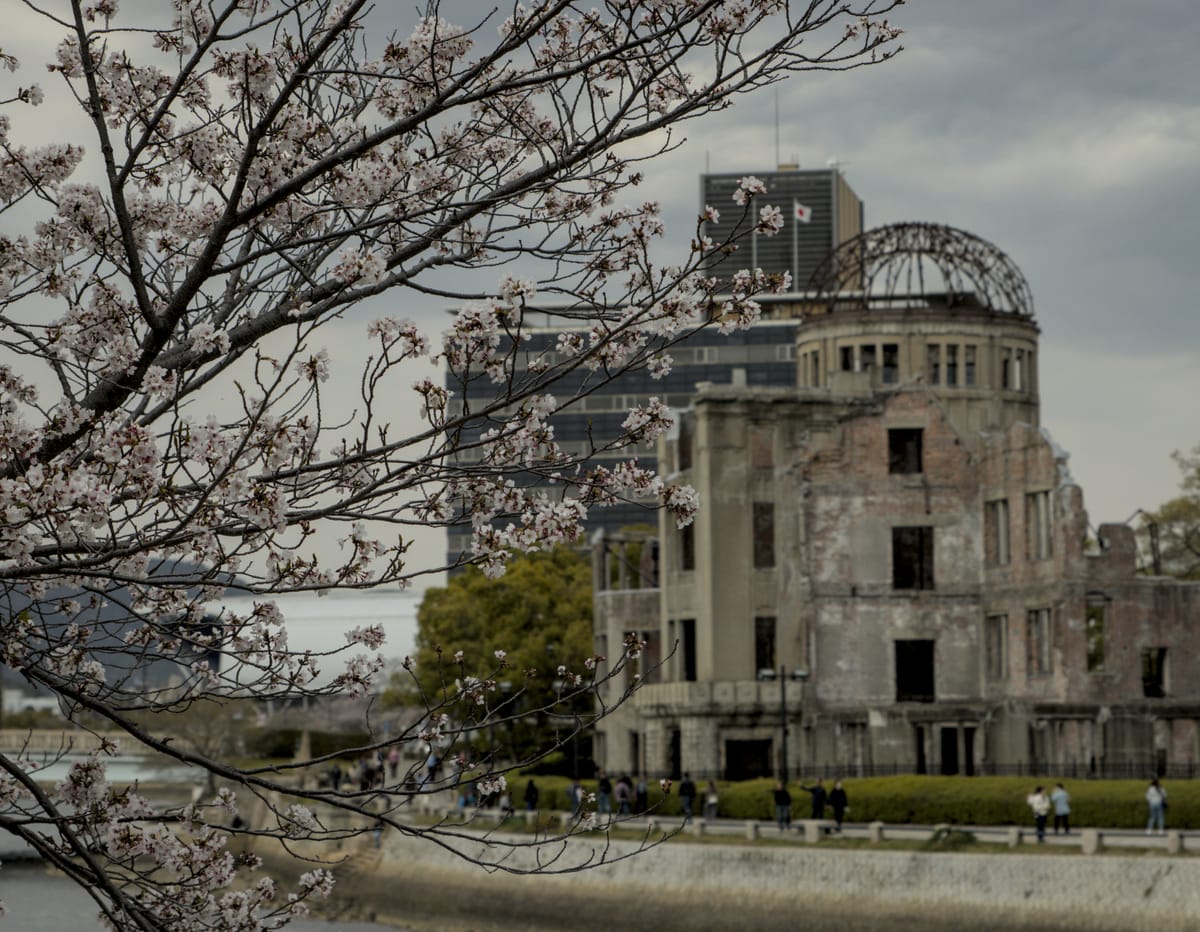
Time to move on from Fukuoka where we could have spent more time to further explore Kyushu - more ideas for the future. Next stop on the schedule is Hiroshima, another city neither Nobue or I have visited. Exploring the memories that still linger there is top of mind going there.
Hiroshima is a short hour and 30 minute Shinkansen ride from Hakata station in Fukuoka.
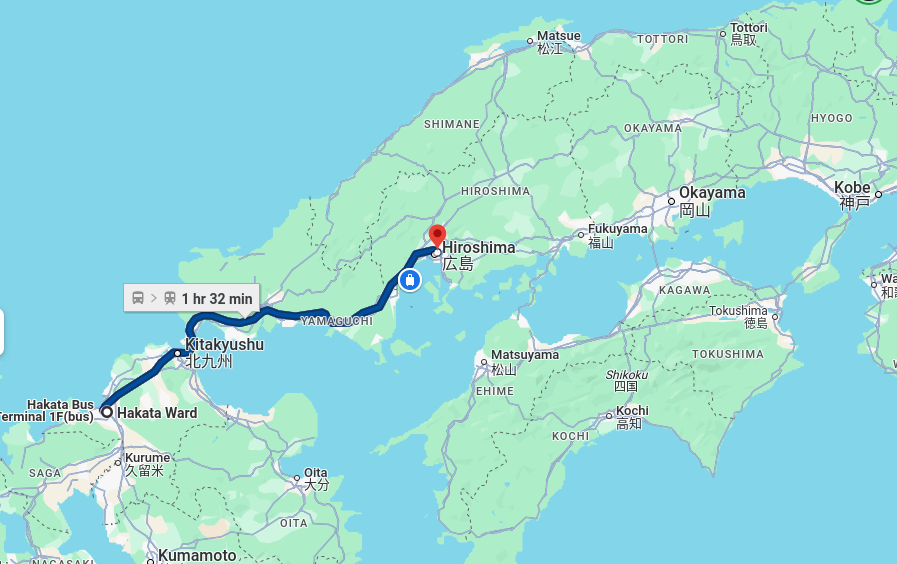
|
As with most train trips on Honshu, especially Shinkansen, the route runs through a lot of agricultural communities – largely rice farms. Between tunnels, we do get glimpses of the villages with wild Sakura trees blooming in surrounding villages. With this route, the Sea of Japan and some islands can be seen zipping by when the route gets closer to the coast. Crossing the Oota River marks the entry to Hiroshima. |


|
Time to explore Hiroshima, but first need to refuel. The dish most identified with Hiroshima is Okonomiyaki - the eggy mixture of shredded veggies, noodles, and some protein sometimes referred to as a Japanese pancake or pizza (neither of which work, imho). Of course the station building is full of places to get them and it is lunch hour so we look for one that has a bit of a line and business folks in it figuring those are good signs. We settled on:

|

|
Our next stop is the Atomic Bomb Dome. To get there, we take another thing Hiroshima is famous for, its trolleys. Most of the lines use updated, modern trains but they still have a few of their classic cars used for special occasions.
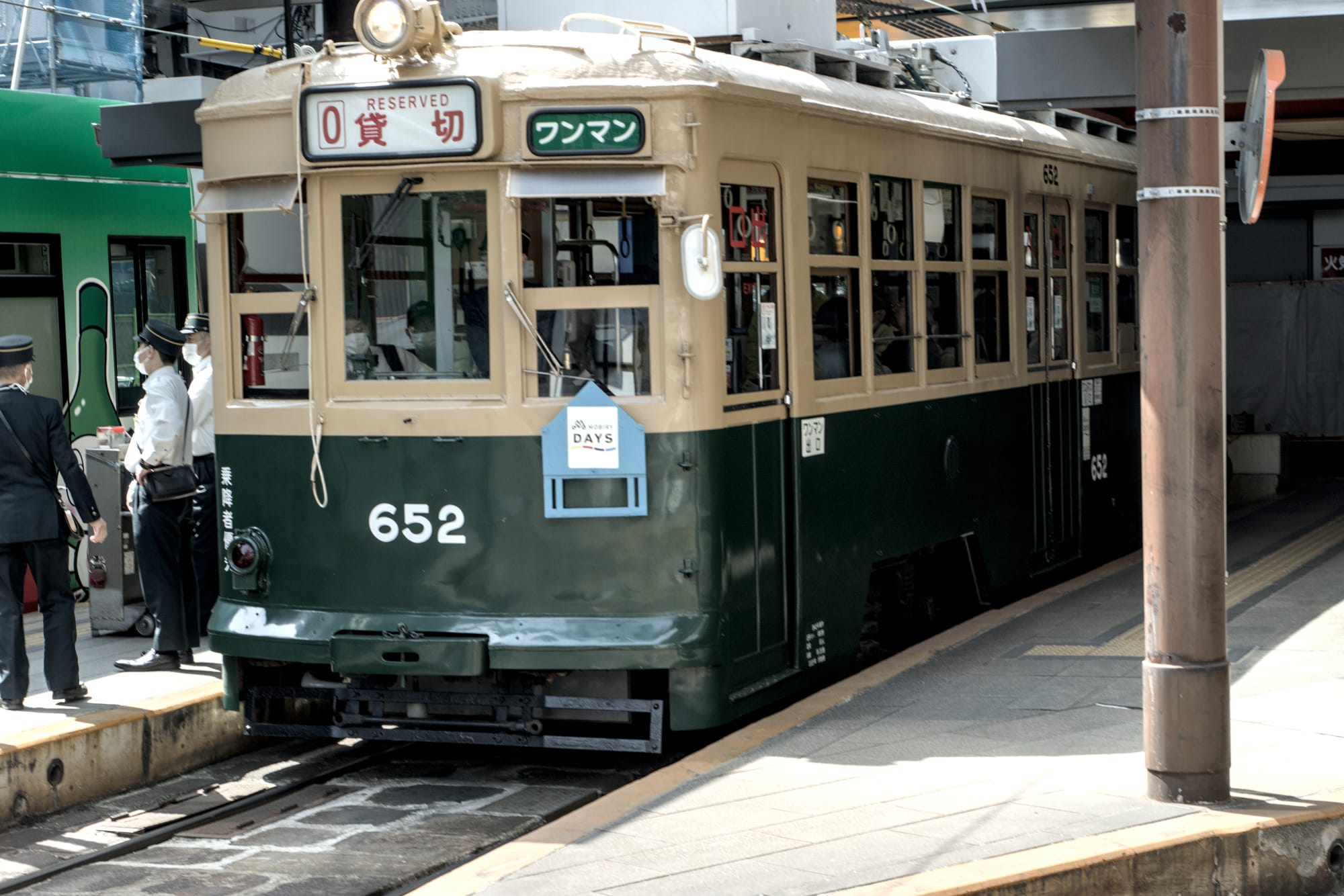
A short ride brings us to the Dome and Peace Park
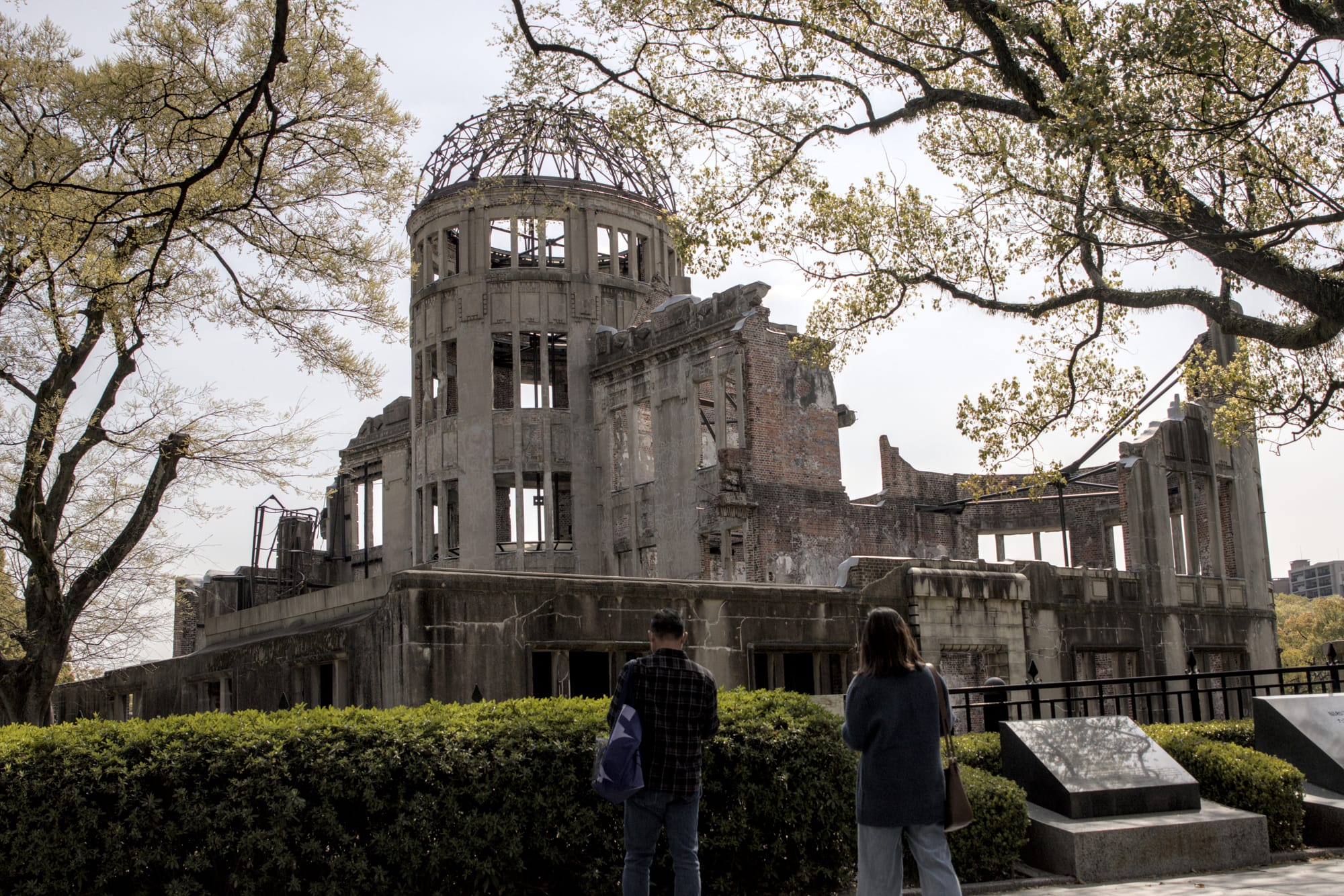
|
This is probably one of the most photographed sites in the world, but seeing is live is much more impactful. Seeing what even a weak-ish nuclear device could do from in one of the two places on earth it happened makes one thankful it hasn’t happened again (yet). |

|
The Dome was part of what originally was the Hiroshima Prefectural Industrial Promotion Hall, which was used as an exhibition site for local products. Opened in 1917 from a design from a Czech architect, the walls survived because the impact they received was mainly from above - the bomb was triggered at 600 meters altitude - rather than vertical pressure. The remains are a UNESCO cultural site, along with most of the peace park.
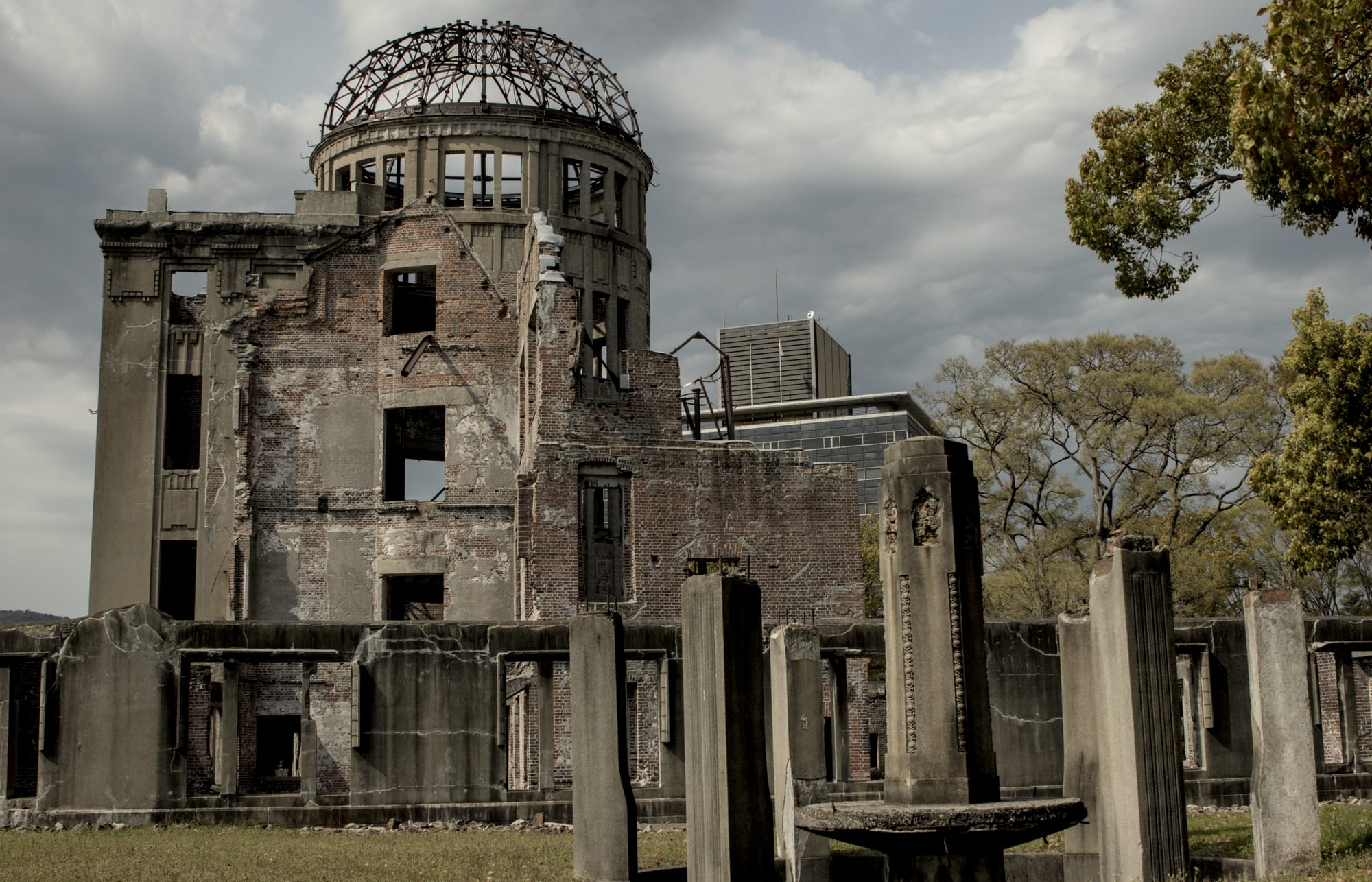
Walking on to the other parts of the park we find that, like Fukuoaka, Hiroshima is at the end of the peak Sakura bloom with lots of trees full of blossoms and groups partying under them.
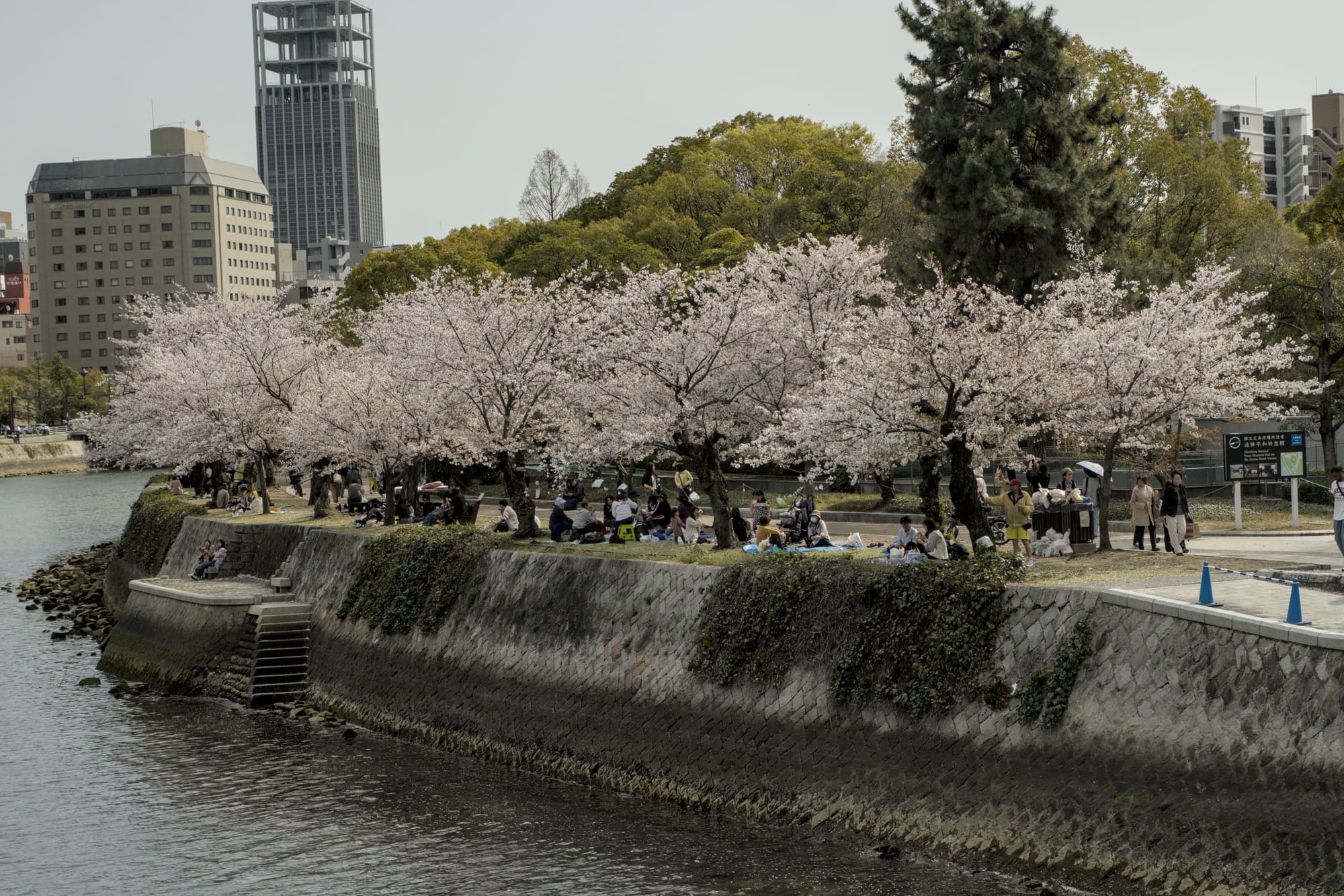

|
Across the river from the Dome is one of the other major memorials, the Children’s Peace Monument. The monument in the middle features a statue of Sadako Sasaki, a young victim of the bomb’s radiation, who was memorialized in the kid’s book “Sadako and the Thousand Paper Cranes.” Arching behind the monument are displays of chains of origami cranes made by children’s groups around the world. |
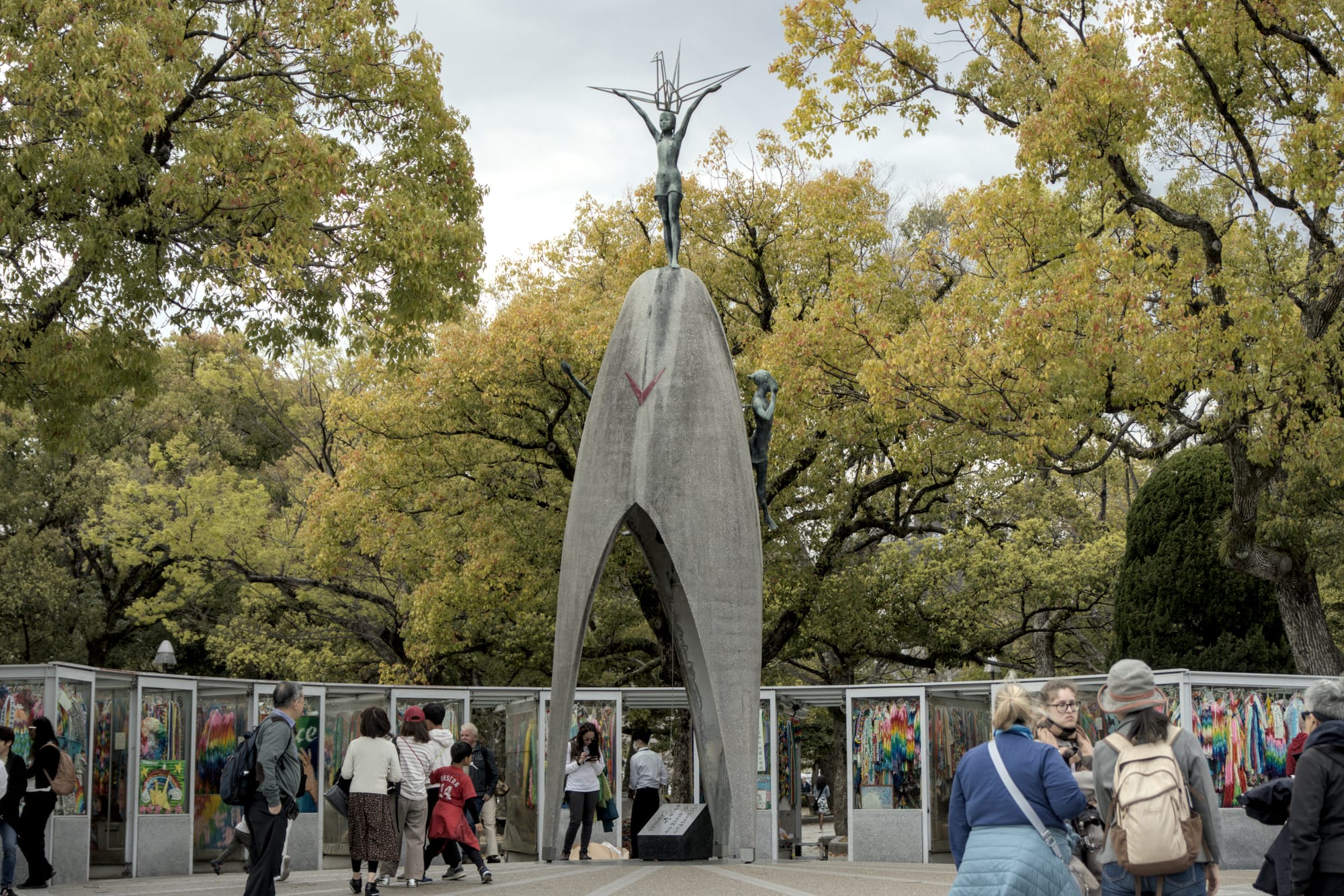
|
The next stop was a bit grimmer and more solemn - the Hall for the Atomic Bomb Victims. This is an underground memorial which preserves the memory of as many of the people who died on that day in a way they can be found by relatives. The memorial draws on what records survived, collection from the remains of the city, and memories of the survivors. The names are listed on panels in a circular under the area of Hiroshima lived. |

|
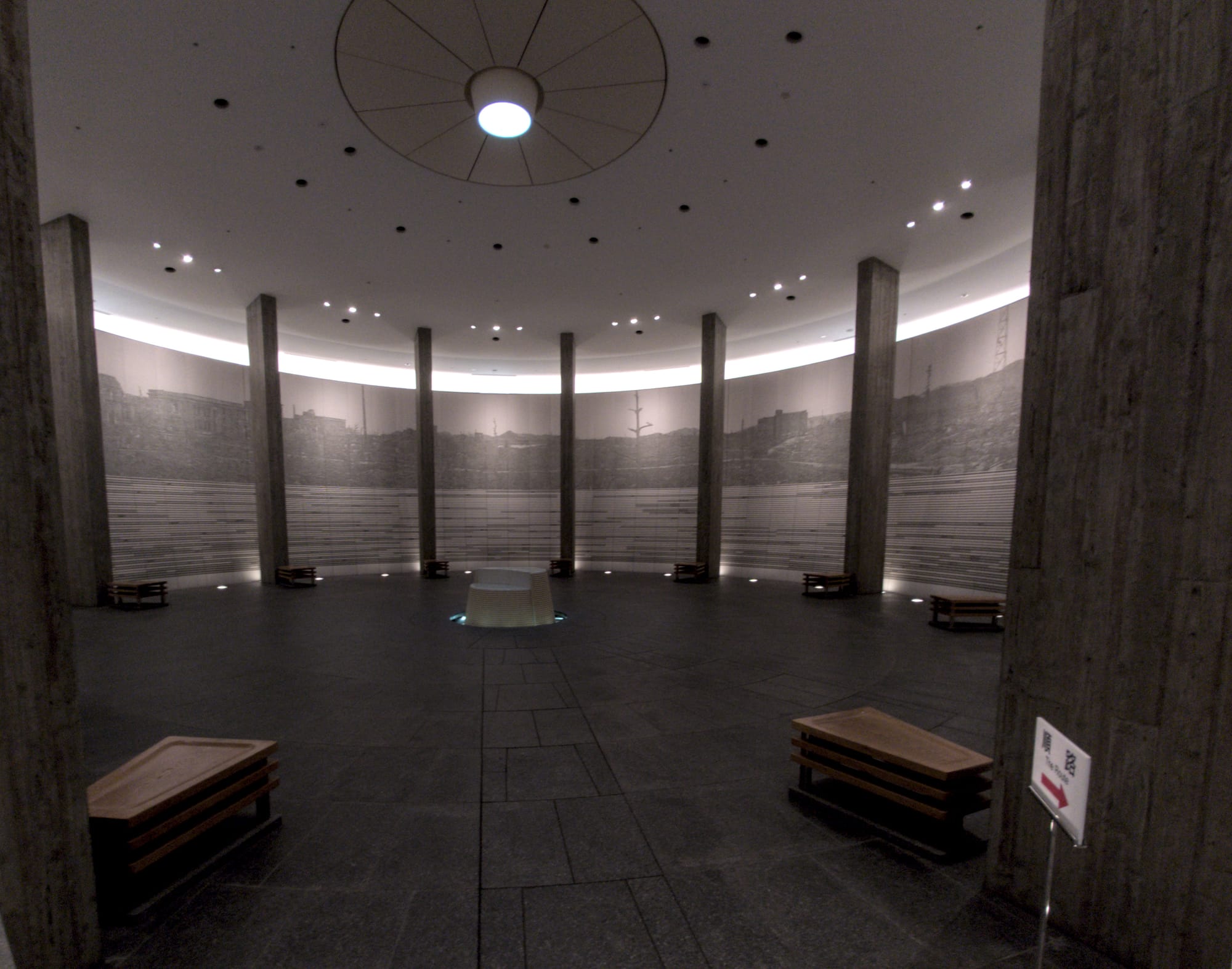
There is also a digital wall displaying the same names and more information about the dead in a rotating display; it is also searchable for families looking for lost relatives.
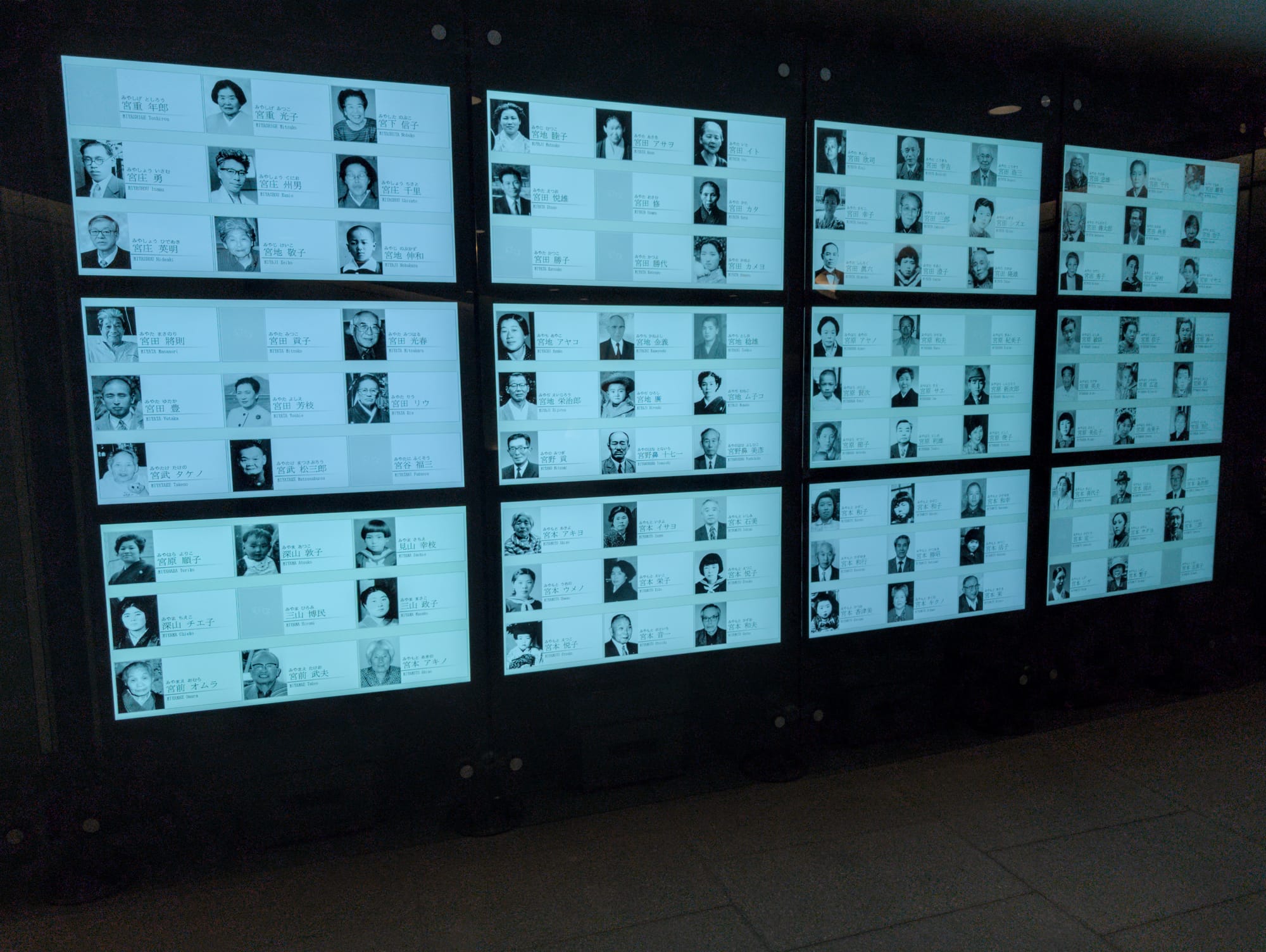
Heading back up to the open, we decide to go visit something more lively, the restored Hiroshima Castle grounds.
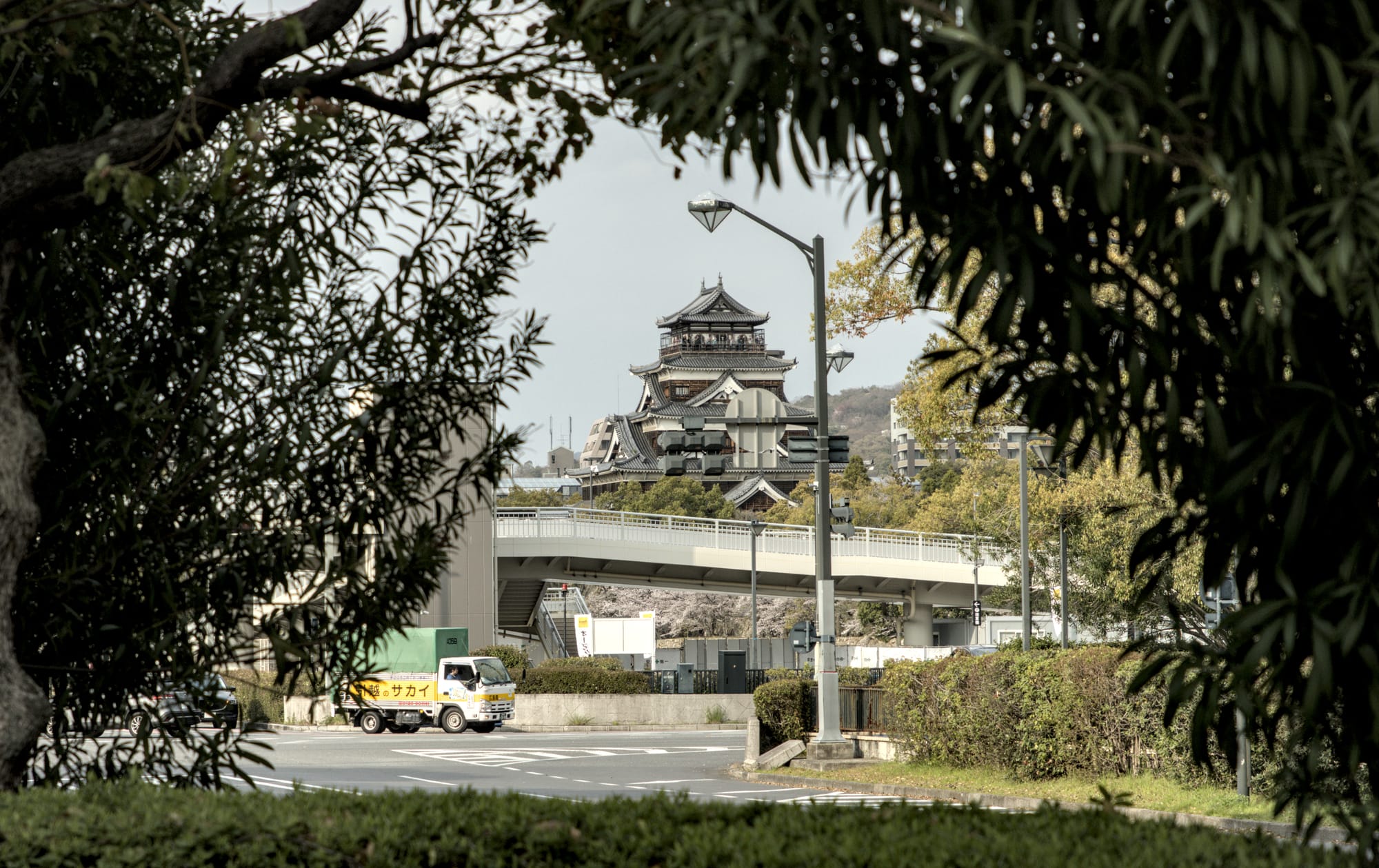
Hiroshima was originally a castle town with the castle being the center of regional power and commerce. It was original built at the beginning of the Tokugawa Period - the 300 or so years Japan was closed to the world - but managed to survive the Meiji restoration, which a lot of the Shoganate castles didn't. The original was destroyed with the rest of the city and with the castle structure restored in the late 1950s.
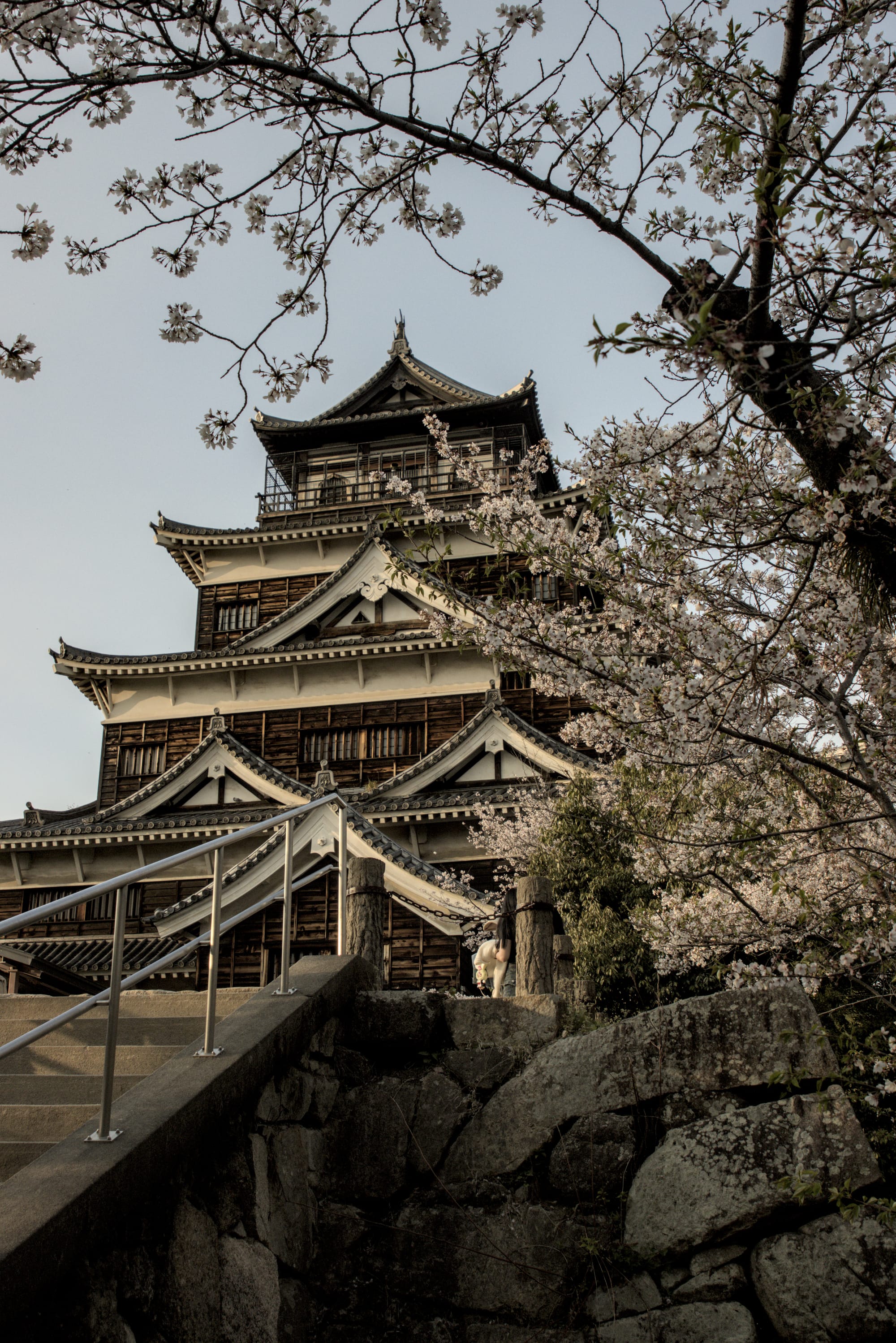
|
Ninomaru, the castles outer defense buildings and moat were restored more recently using the original plans, building materials, and as close to the same craftsmanship as they can duplicate (which is pretty close – Japanese are good at preserving craft skills). |

|
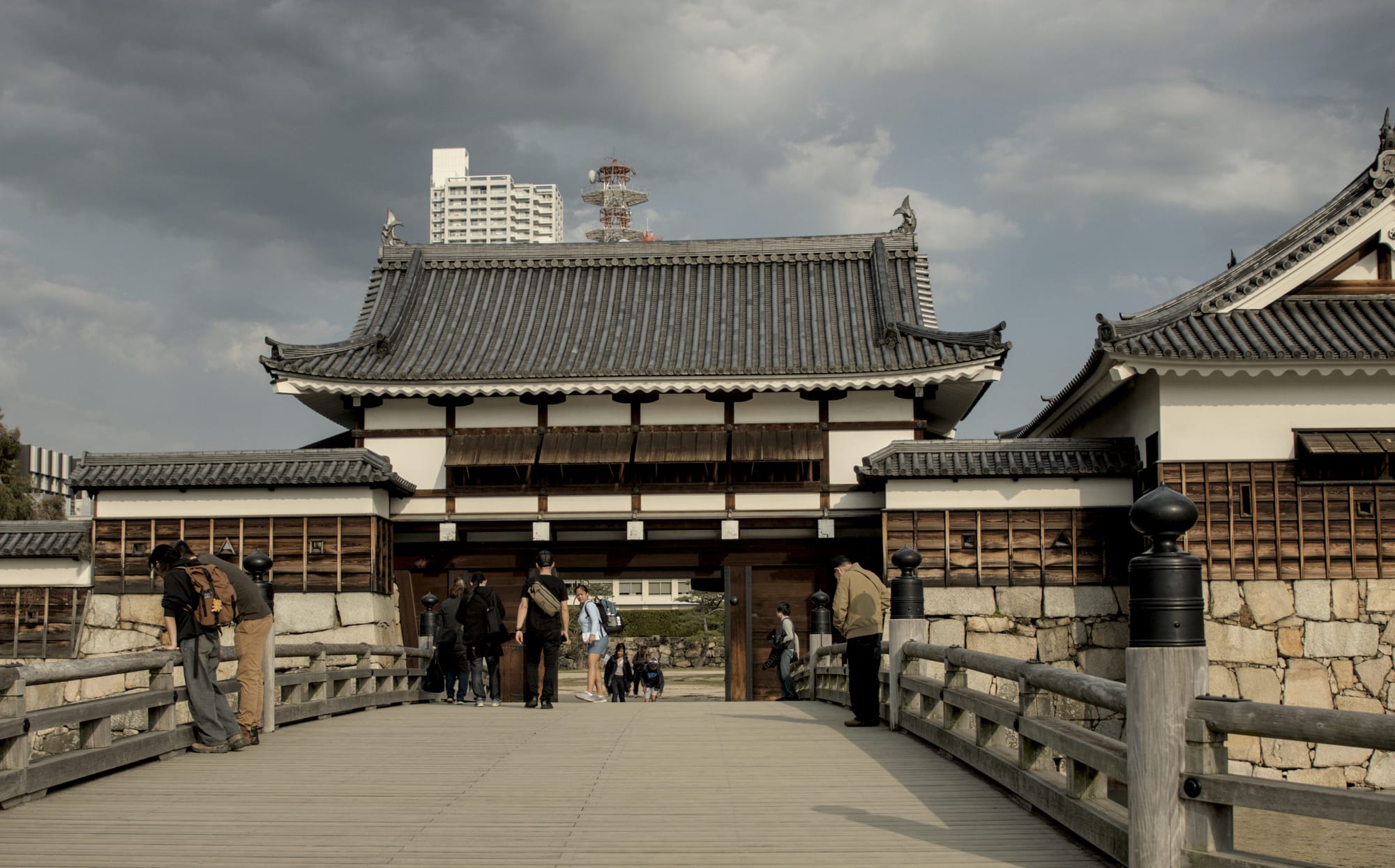

|

|
The outer buildings are open, so we took an extended walk through the main hall. It displayed the standard high-end classic interiors the more powerful daimyo (regional commanders/governors answering to the shogun) could afford. These are usually spaces for the second level leaders of the daimyo's army as well as defensive spots when the castle is under attack.

|

|
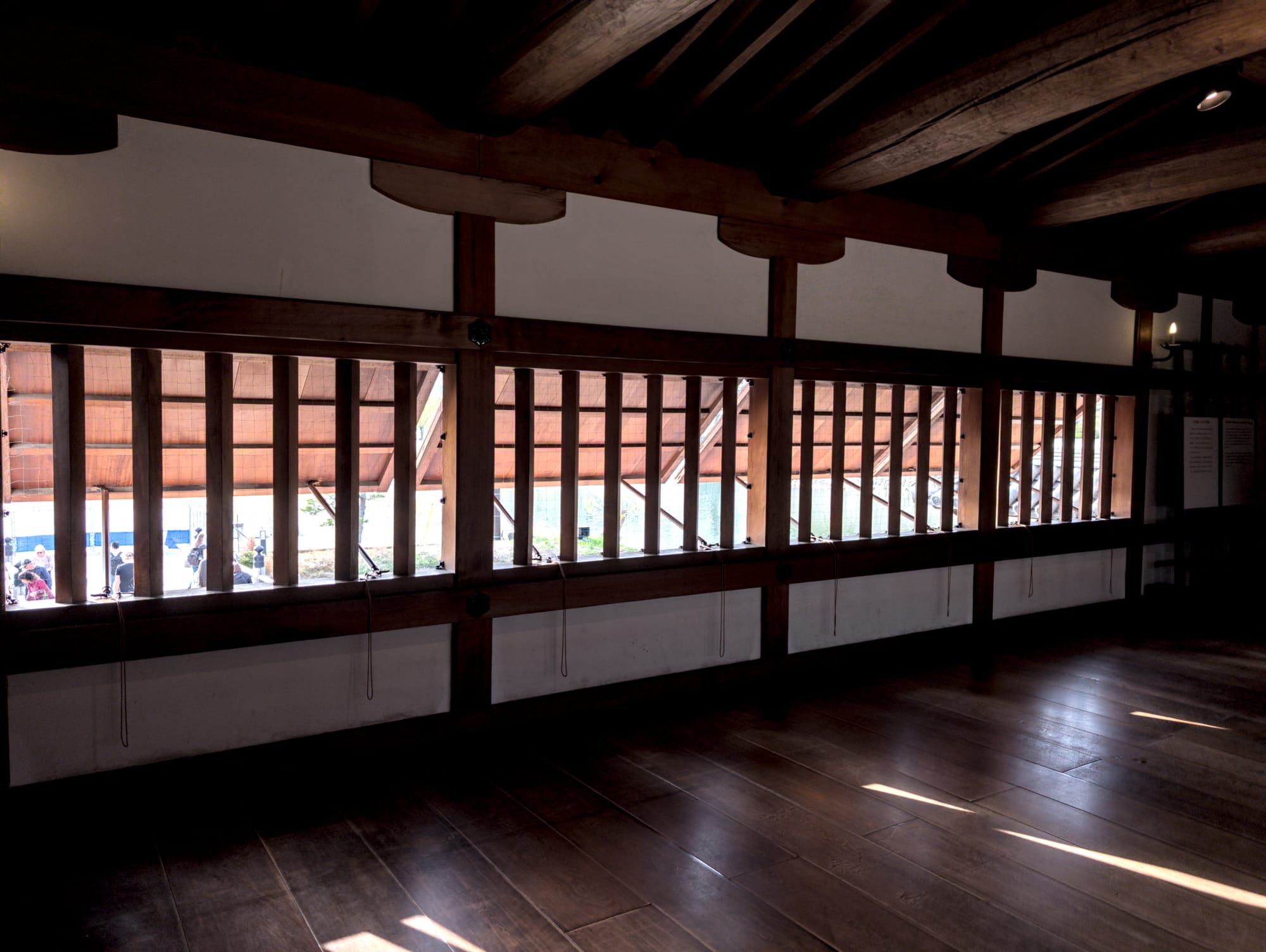

|
Unfortunately, with the time we took in the Ninomaru buildings and grounds, we didn't get to the main castle hall before it closed. Exhausted, hungry, and ready to crash, we head to the night's resting spot to prepare for tomorrow. |
As usual, there are a LOT more photos here in the Gallery. There is one more BIG visit on the next day then things slow down so maybe (?!?!) I'll catch up?
